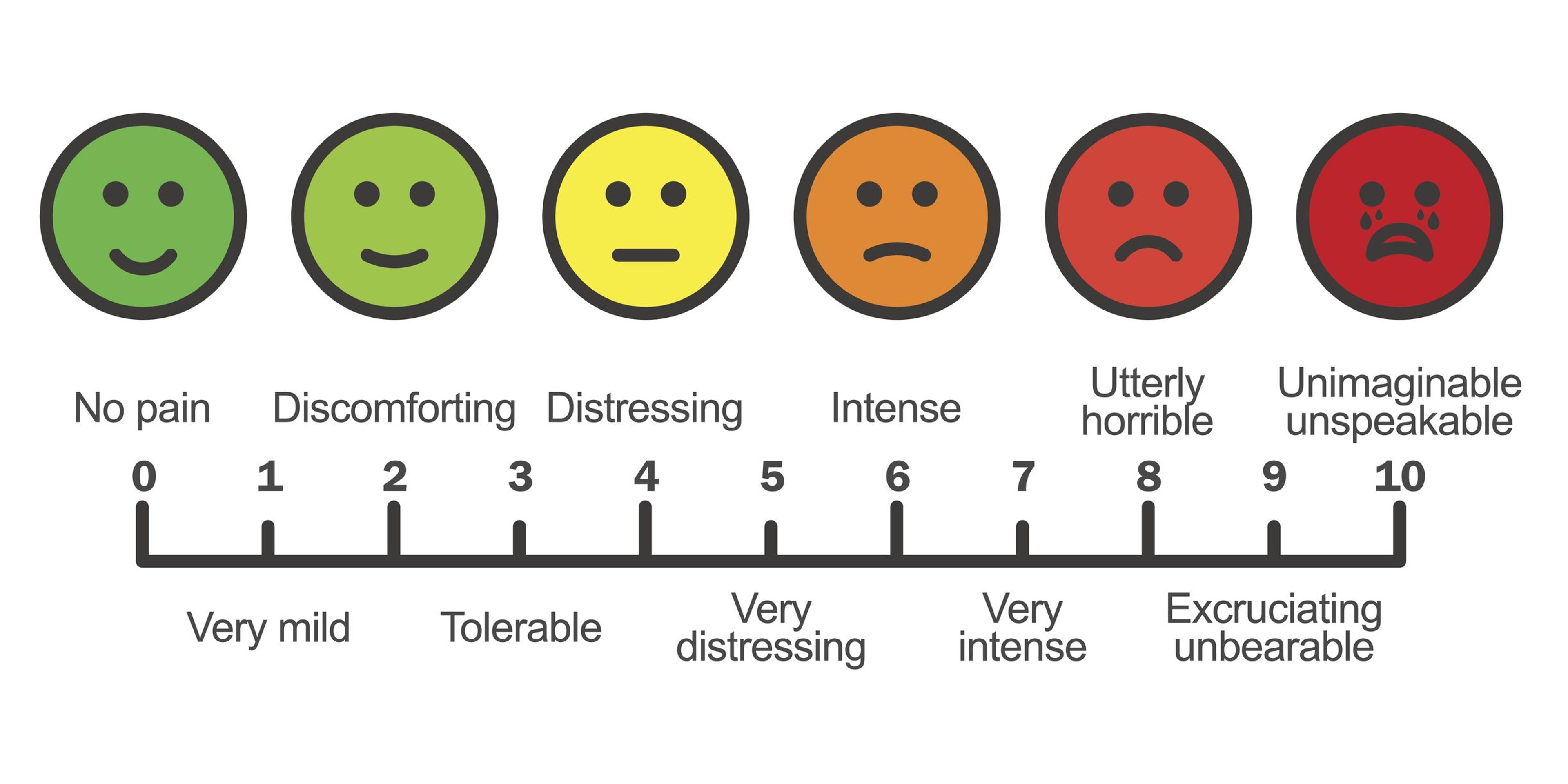
More than one in five American adults reported they experience pain most days or every day. Measuring pain is tricky: what is considered severe pain to one person could be mild pain for another person. It’s a subjective feeling.
How do health care providers know what treatment to prescribe, if everyone perceives pain differently? Enter the pain scale. It’s a tool used to help patients report to doctors the pain they are feeling. Pain can be acute – meaning it goes away after treatment – or chronic, which means it is persistent. Pain that’s not managed correctly can contribute to worse physical and psychological outcomes for patients, as unrelieved pain stresses multiple systems in the body.
What is a pain scale?
The most common type of pain scale measures how intense pain is. Here are some pain scales you may see in practice:
- Numeric rating scale: This uses a one to 10 scale to allow patients to rate their pain. Zero is considered no pain; one to three is mild pain; four to six is moderate pain and seven to 10 is severe pain.
- Visual analog scale: This uses a continuous line, with one end marked as “no pain” and the other end marked as “worst possible pain.” Patients then are asked to mark a spot on the line to show their pain intensity, and doctors then determine a pain score.
- Categorical scale: In place of numbers, this scale uses words to indicate their pain. One end of the scale is “no pain” to “mild pain,” with the other end of the scale marked with “very severe pain” and “worst possible pain.” A version of this scale, known as the Wong-Baker Faces Scale, is used for children that uses graphic faces; “no pain” has a smiling green face, with a red crying face for “hurts worst.”

Other pain scales are considered multidimensional, as they incorporate factors other than intensity of pain. Multidimensional pain tools are less commonly used. They can include initial pain assessment tools, the brief pain inventory and the McGill pain questionnaire.
How are pain scales used?
Pain scales are a simple, quick way for doctors to understand what a patient is feeling. They work best when evaluating new, sudden pain. They can assist in prescribing treatment, as well as monitoring if treatment is effective. The goal of any treatment plan for pain is to make pain more manageable, not stop pain entirely.
Patients may encounter a pain scale during a wellness checkup with their primary care provider, during admission to the hospital, before and after a surgery, or during physical therapy.
Pain is subjective; and pain scales attempt to relay the severity of pain for the individual to the providers so they know what the person is experiencing in the moment. Pain can have many influencing factors, especially if someone is experiencing chronic pain. If you’re experiencing long-term pain, talk to your primary care provider.
Photo credit: Getty Images
Related:






